#Infrastructure & Transportation
Explore tagged Tumblr posts
Text
someone got really angry and sent like 7 back-to-back anons to me about how railways are evil and environmentally deatructive(???) and implied I was a fascist for liking trains or something? the phrase 'infinite railroads on a finite planet' was used
#I'm sorry it's just like dghdgdh completely hilarious to care about the environment and oppose railways.#unless everyone's just going to walk then railways are the single *least* disruptive infrastructure that could be used for transport
4K notes
·
View notes
Text
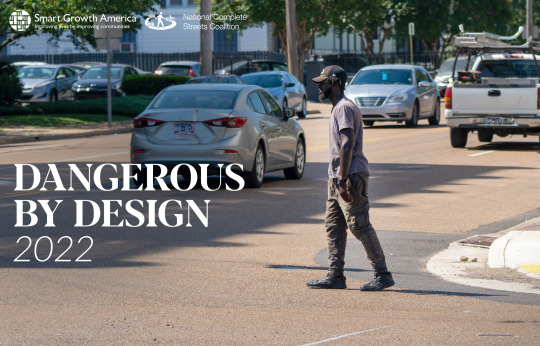
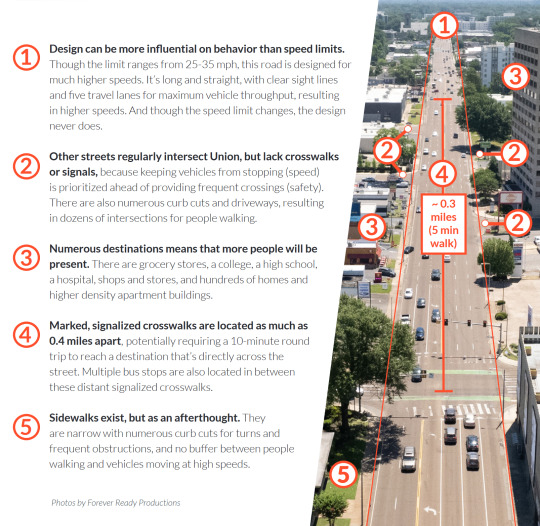




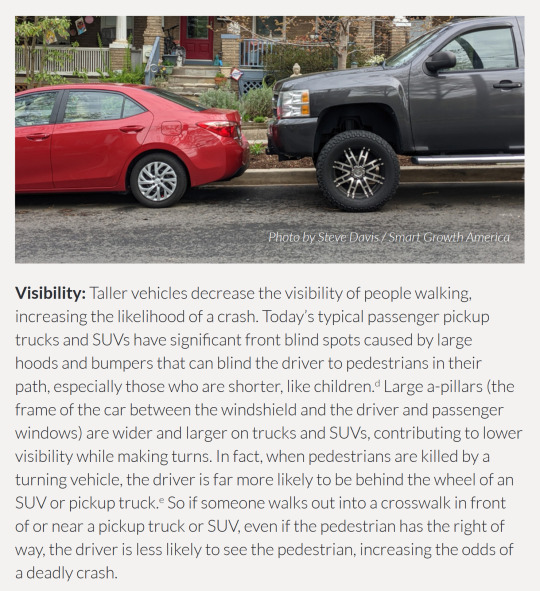




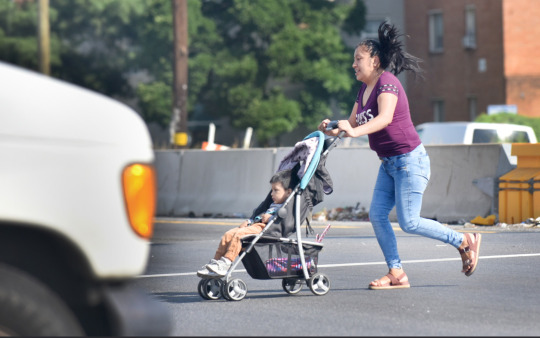
America's Roads: Dangerous by Design
#the link leads to the pdf that i got all these pics + graphics from#very interesting and informative and written in very clear and easy to understand language#please read please reblog this is something im passionate about#mine#pedestrian safety#car centric infrastructure#walkable cities#urbanism#public transportation#urban design
3K notes
·
View notes
Text
In a first for Canada, freight traffic on its two largest railways has simultaneously ground to a halt, threatening to upend supply chains trying to move forward from pandemic-related disruptions and a port strike last year. In the culmination of months of increasingly bitter negotiations, Canadian National Railway Co. (CN) and Canadian Pacific Kansas City Ltd. (CPKC) locked out 9,300 engineers, conductors and yard workers after the parties failed to agree on a new contract before the midnight deadline. The impasse also affects tens of thousands of commuters in Toronto, Montreal and Vancouver, whose lines run on CPKC-owned tracks. Without traffic controllers to dispatch them, passenger trains cannot run on those rails. Pressure from industry groups and government to resolve the bargaining impasse has been mounting for weeks, with calls to hash out a resolution likely to ratchet up further now the work stoppage has begun.
Continue Reading
Tagging: @newsfromstolenland
708 notes
·
View notes
Text




Bus stop murals of Pyongyang
257 notes
·
View notes
Text
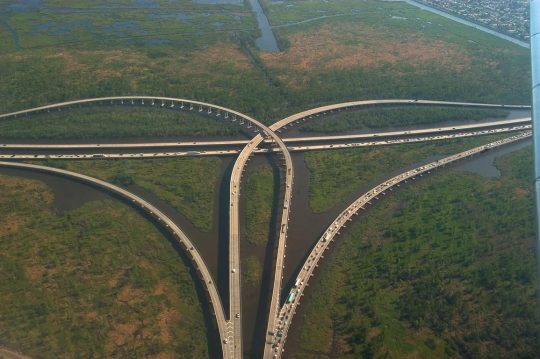
137 notes
·
View notes
Text
Cars vs Accessible Worlds
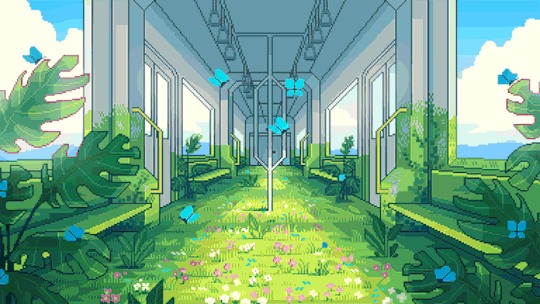
Alright, let me talk about one thing in terms of accessibility in science fiction settings - and Solarpunk specifically - that also has more than one side to it: Cars and accessibility. Because it is more complicated than you'd thing.
See: The fact that our world is so car centric really, really hinders accessibility. Wide streets are a hindrance for even normal pedastrians, cyclists and so on. If I want to get from A to B, and the route crosses a street, and there is only a traffic light every like 500 meters, it means tat I usually need either to risk my life or take the long way around to get there. And that is a fucking bother even when you are healthy and can easily take that long way around. And the more car centric a society is, the worse the issue becomes. Here in Germany it is a lot easier still to cross a street than in many places in the US.
And of course this gets a lot worse if you are disabled. Be it that you just cannot walk that far. Or if you are blind and cannot even see in what direction you could go for the next traffic light. Or if you are hard of hearing or deaf, you might be more in danger of being surprised by a car. (And that is without going into how electric cars being so fucking quiet makes stuff even more dangerous.) And, you know, neurodivergent people might also just struggle with the fucking noise that is created by roads and is often inescapable in big cities.
And of course even outside of the environmental issues, the constant presence of cars is also a health risk. Not just because of the risk of accidents, but also due to the pollution and how it interacts. Even if we all were driving electric cars, there would still be all those microplastics created by tires and streets and stuff.
So, really. We do need to move away from car centric infrastructure to make our lives healthier and to make the world more accessible for disabled people too.
BUT...
But there is the issue that some disabled people still might be in need to use some sort of personal transportation device that can cover both short and large distances, because for one reason or another public transport just does not work and cannot work for them.
For example someone with severe anxiety issues, or someone who will be easily suffering from sensory overwhelm. There might be other issues, too. Just some folks will always need something like cars.
And of course there is also the fact that stuff like emergency services will still need streets accessible to cars. Because the emergency services will just not get around using something like cars to get to all the places they might be needed.
And this... makes things complicated. Because infrastructure should not be car centric, no. But it needs to be accessible by cars - and be it just for emergency services.
This is just something that I would love to see more talked about especially within the Solarpunk sphere.
#solarpunk#lunarpunk#infrastructure#car centric infrastructure#anti cars#mobility#public transport#accessibility#disability rights#disability#15 minute city#trains
186 notes
·
View notes
Text
This is simly creep and reeks of desperation on the part of conservatives and oligarchs who whine about falling birth rates and not enough children being made. At this point abstaining from procreation is resistance, we should give in an have children because some rich oligarchs and traditionalist demand we do so.
#leftism#progressive#culture#politics#eat the rich#communism#tax the rich#us politics#the left#corporate greed#childbirth#birth#pregnancy#transportation provider#transportation management#transport#infrastructure#department of transportation#conservatives#gop#trump#republicans#maga#trump administration#elon musk#american politics#inauguration#fascisim#naziism#elongated muskrat
28 notes
·
View notes
Text

Master chief, mind telling me what you're doing on public transport?

"Sir. Reducing emissions."
#juice speaks#i know this meme is dead but u know what isnt? public transport infrastructure. YET! support ur local public transport#halo#<- i guess
61 notes
·
View notes
Text
I've been thinking about urbanism and about how some people (I'm particularly thinking folks like “the vocal minority of business owners that go absolutely apeshit any time there's a proposal to remove some space from cars in favour of a bike lane, a tram line, a pedestrianised area, etc”) don't seem to really consider anyone outside a car to be a person.
*a city plans to remove some parking spaces to make room for a protected bike lane*
“But how is anyone supposed to get here?!”
*looks at bustling street filled with pedestrians, cyclists, and people riding a tram*
Like, it genuinely doesn't seem to occur to some people that all of those people moving around outside of cars are people. That's how “anyone is supposed to get here”: by way of all of the non-car options, especially those that are actively made safer and easier by the removal or limiting of space for cars. And I don't know what's going on here - whether it's something like classism (only those wealthy enough to drive everywhere matter as people) or simply that car dependency is perhaps so entrenched and unquestioned for some folk that it genuinely doesn't occur to them that getting to a place without a car is (or at least should be) an entirely valid and possible thing to do. It's probably a bit of both. But my god does it drive me nuts when people respond to a new proposal that will dramatically increase the capacity and footfall of an urban space by shifting from emphasising cars to emphasising walking, cycling and public transport with “but how will anyone get here?!”
#and don't even get me started on transport planning that's all about “how many cars can we fit down this road”#rather than “how many PEOPLE can we fit down this road”#urbanism#urban design#urban planning#city planning#infrastructure#transportation#public transport#public transit#pedestrian safety#bike lanes#fuck cars
55 notes
·
View notes
Text








On 20th November 1964 the first part of the M8 Motorway between Edinburgh and Glasgow was opened.
It was built in several stages, the majority of which were completed between 1965 and 1980. My dad used to moan about it, while you seen at least three lanes in motorways down south, right up till the 80's it was a glorified dual carriageway.
The M8 has a long history, starting with the construction of the first section in and continuing through to 2017
The first section was, in effect a bypass for Harthilll, 55,000 cars are recorded using the Harthill stretch of the motorway every day but it is not the busiest part of the road. The heaviest traffic, on average, is at junction 15 north of the Kingston Bridge where around 119,000 cars move across 10 lanes.
As the M8 grew, construction in the centre of Glasgow from 1968 demanded that huge areas of tenement blocks and business premises were flattened to make way for the motorway.
While the road led to the demolition of swathes of “sub-standard properties”, response was mixed with major upheaval around St George’s Cross and Anderson taking its toll as the giant roads were created.
As the year went by panners created routes that could accommodated car flows of the future. Some 120,000 cars were planned for in some places when, at the time, only 20,000 vehicles were on the road.
As experts have commented, a lot of justification was required with plans for even more motorways around Glasgow shelved over time.
The city centre section was completed in 1972 with the majority of the route finished by1980.
The M8 was named in 2007 as the worst commuter route in Britain when 85 percent of drivers faced a delay at peak times, the RAC has recorded that it is the least efficient motorway in the UK with an average speed of just 53mph.
21 notes
·
View notes
Text
In my city, four new elevators and other ♿️ accessability features are being installed at a busy, major train station, thanks to this effort. As I have difficulty walking down (yes, down!) stairs, this makes a major difference to me and so many others!
💙
♿️VOTE!
#register to vote#vote blue#disability#accessibility#transportation#trains#elevators#lifts#mobility#disability rights#joe biden#KamalaHarris#vote democrat#please vote#vote harris#disabled voters#infrastructure#do something
24 notes
·
View notes
Note
Freeways are NOT safer than surface streets, the most deadly accidents happen on freeways due to the high speeds involved. Look up actual statistics and go to drivers ed b4 you bootlick for freeways.
My very first ask! Thanks anon!
So, even though you called me a bootlicker for advocating for public transit, I'm going to address the core of your argument and leave out the ad hominem.
1. Couldn't find any statistics on freeway vs. surface streets percentage. If you've got it, let me know and stop using the smoothbrained alt-right "do your research" line. Only related thing I could find is that 17% of traffic deaths are pedestrians, which (statistically) don't occur on freeways.
2. I suspect you're right that more fatal crashes occur on freeways! However, we have to adjust for how much travel time is spent on freeways vs. surface streets. If they're far more heavily used (spoilers: they are), then even a higher number of deaths still equates to a LOWER number of deaths per capita, meaning they're safer. That's statistics, even if they don't agree with your world view.
3. (And this one is really important) Freeways suck. They suck for a plethora of reasons. There's so much scholarship and research on the suckiness of freeways. Public transit infrastructure is the solution to that problem. I will never advocate for the expansion of freeways (or even their use over surface streets), especially at the expense of a robust public transit system.
Huh, I guess I addressed the bootlicker comment after all, you sly devil.
#amtrak#public transit#freeways#infrastructure#bootlicking#trains#cars#transportation#half of my OCs are trains
166 notes
·
View notes
Text



watched an anime over the weekend that singlehandedly triggered tf out of my wanderlust look how pretty kitakyushu, bat’s fan meeting location, is what if i travelled to japan for christmas—
#vee queued to fill the void#*punches myself in the face* TWO TRIPS TO JAPAN IN ONE YEAR????? ARE YOU FCKING CRAZY???????#*kicks my own shins* NO BUT ITS NOT THE MAIN ISLAND AND THATS SICK ASF#*slams glass over my head* LOS ANGELES BANKRUPT YOU LIKE ACTUALLY#*throws myself thru a window* JAPAN IS CHEAPER BC IT HAS BETTER PUBLIC TRANSPORT INFRASTRUCTURE#*stabs myself* CHRISTMAS BTCH YOU CANT DO THAT#*sets myself on fire* FAIR POINT BUT ITS THREE DAYS AFTER YOU CAN LEAVE ON THE 26TH AND STAY TILL THE 31ST#*crying* IM SAVING MONEY GODDAMMIT STOP SPENDING EGREGIOUS SUMS OF MONEYYYYYYYYYYYYYY
24 notes
·
View notes
Text
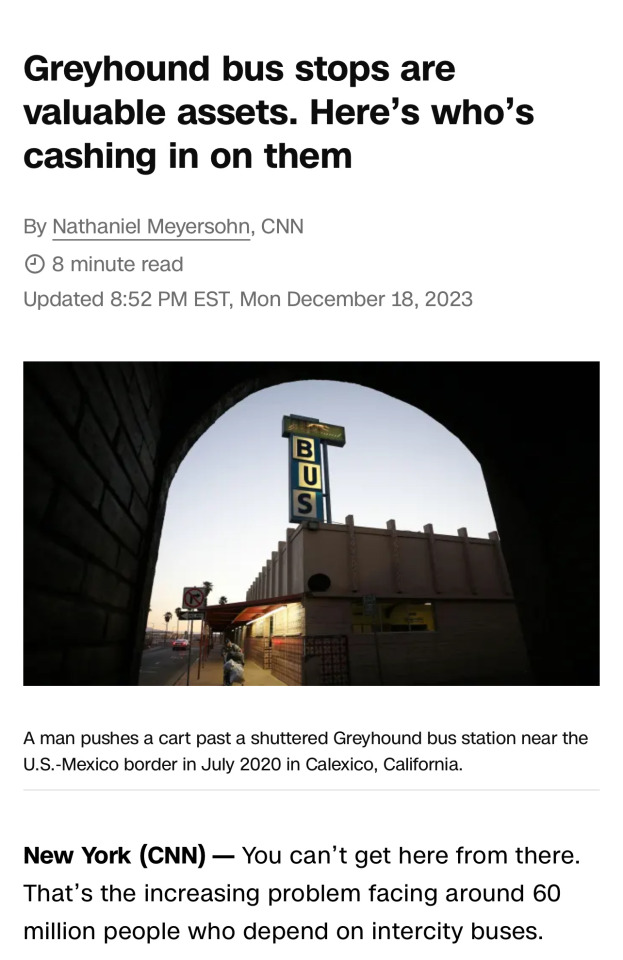
“All this happening at once is really startling,” said Joseph Schwieterman, a DePaul University professor who researches intercity bus travel and directs the university’s Chaddick Institute for Metropolitan Development. “You’re taking mobility away from disproportionately low-income and mobility-challenged citizens who don’t have other options.”
Roughly three-quarters of intercity bus riders have annual incomes of less than $40,000. More than a quarter would not make their trip if bus service was not available, according to surveys by Midwestern governments reviewed by DePaul University.
Intercity bus riders are also disproportionately minorities, people with disabilities, and unemployed travelers.
A spokesperson for Greyhound, which is now owned by German company FlixMobility, said it strives to offer customers the most options for connections, but has “encountered challenges in some instances.” The spokesperson also said they “actively engage with local stakeholders to emphasize the importance of supporting affordable and equitable intercity bus travel.”
The terminal closures have been accelerating as Greyhound, the largest carrier, sells its valuable terminals to investors, including investment firm Alden Global Capital.
Last year, Alden subsidiary Twenty Lake Holdings purchased 33 Greyhound stations for $140 million. Alden is best known for buying up local newspapers like The Chicago Tribune, New York Daily News and The Baltimore Sun, cutting staff, and selling some of the iconic downtown buildings.
Alden has started to sell the Greyhound depots to real estate developers, speeding up the timetable for closures.
“I don’t know the specific details of each building, but it is clear what is happening here: an important piece of transit infrastructure is being sacrificed in the name of higher profits,” said Stijn Van Nieuwerburgh, a professor of real estate at Columbia Business School.

“The public sector has turned a cold shoulder to buses,” DePaul’s Schwieterman said. “We subsidize public transit abundantly, but we don’t see this as an extension of our transit system. Few governments view it as their mandate.”
Bus terminals are costly for companies to operate, maintain and pay property taxes on. Many have deteriorated over the years, becoming blighted properties struggling with homelessness, crime and other issues.
But terminal closures cause a ripple effect of problems.
Travelers can’t use the bathroom, stay out of the harsh weather or get something to eat while they wait. People transferring late at night or early in the morning, sometimes with long layovers, have no place to safely wait or sleep. It’s worse in the cold, rain, snow or extreme heat.
Bus carriers often try to switch to curbside service when a terminal closes, but curbside bus service can clog up city streets with passengers and their luggage, snarl traffic, increase pollution, and frustrate local business owners. In Philadelphia, a Greyhound terminal closure and switch to curbside service after its lease ended turned into a “humanitarian disaster” and “municipal disgrace” with people waiting on street corners.
(continue reading)
#politics#infrastructure#bussing#public transportation#mass transit#mass transportation#capitalism#economic racism#the commons#greyhound#flixmobility#greyhound bus#greyhound bus lines#bus stops
71 notes
·
View notes
Text

#urban planning#meme#cars#car dependence#fuck cars#(obligatory 'cars are good for some applications but the entire pop of a city depending on em just to get a bag of groceries is wtfery')#tbh it really fucks me off that the netherlands gets dumped with snow and is cold a lot but the canadian prairies act like it's a no go lol#netherlands#comic#bicycles#cycling#ebikes#induced demand#bakfiets#public transportation#public transit#infrastructure
78 notes
·
View notes
Text

69 notes
·
View notes